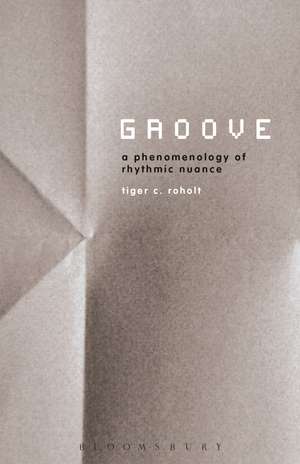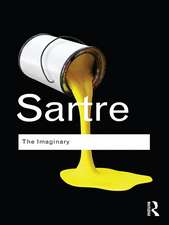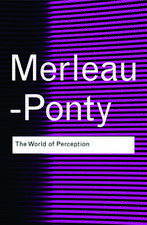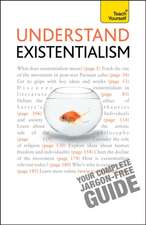Groove: A Phenomenology of Rhythmic Nuance
Autor Assistant Professor Tiger C. Roholten Limba Engleză Hardback – 19 noi 2014
| Toate formatele și edițiile | Preț | Express |
|---|---|---|
| Paperback (1) | 187.99 lei 6-8 săpt. | |
| Bloomsbury Publishing – 19 noi 2014 | 187.99 lei 6-8 săpt. | |
| Hardback (1) | 705.18 lei 6-8 săpt. | |
| Bloomsbury Publishing – 19 noi 2014 | 705.18 lei 6-8 săpt. |
Preț: 705.18 lei
Preț vechi: 913.66 lei
-23% Nou
Puncte Express: 1058
Preț estimativ în valută:
135.07€ • 146.43$ • 112.28£
135.07€ • 146.43$ • 112.28£
Carte tipărită la comandă
Livrare economică 03-17 decembrie
Preluare comenzi: 021 569.72.76
Specificații
ISBN-13: 9781441166272
ISBN-10: 1441166270
Pagini: 192
Ilustrații: 6 bw illus
Dimensiuni: 140 x 216 x 20 mm
Greutate: 0.39 kg
Ediția:New.
Editura: Bloomsbury Publishing
Colecția Bloomsbury Academic
Locul publicării:New York, United States
ISBN-10: 1441166270
Pagini: 192
Ilustrații: 6 bw illus
Dimensiuni: 140 x 216 x 20 mm
Greutate: 0.39 kg
Ediția:New.
Editura: Bloomsbury Publishing
Colecția Bloomsbury Academic
Locul publicării:New York, United States
Caracteristici
As a philosopher and highly skilled drummer, author is perfectly placed to write this
Notă biografică
Tiger C. Roholt is Associate Professor of Philosophy at Montclair State University, USA and is author of Key Terms in Philosophy of Art (Bloomsbury Academic, 2013).
Cuprins
Chapter 1. Musical NuanceChapter 2. PerceivingChapter 3. The BodyChapter 4. Groove in Music
Recenzii
Roholt provides an eminently approachable study of a commonplace phenomenon in music-groove, or the rhythmic feel of music that makes listeners want to move. The author is a professional drummer as well as a philosopher, and he does an excellent job of combining philosophy and musical experience. The study will be particularly useful in introducing music students to the phenomenology of music and recent developments in music psychology. The argument is lucid yet sophisticated, and the groove phenomenon is so universal and appreciable that the book has excellent interdisciplinary potential. The useful bibliography-a blend of music, philosophy, and psychology titles-could make the backbone for a graduate seminar. Summing Up: Highly recommended. Upper-division undergraduates through faculty and professionals; general readers.
This book is a welcome addition to the ever-growing field of the philosophy of music. It tackles with a lot of clarity an overlooked subject -- the phenomenon of groove -- which is crucial in the appreciation of a great number of popular music genres (e.g., jazz, reggae, funk, rhythm and blues, hip-hop).
One of the highest compliments that can be paid to a work of aesthetics is that it has made one attend to art more closely or in a different way. Reading Groove has certainly informed the way I listen to music and has helped me better understand the difficulties involved in making music with others.
Roholt has developed a promising theory that anyone working on related questions will have to consider. Indeed, it seems to me that the book might function as a kind of phenomenological groundwork for consideration of a whole range of philosophical questions about music: musical space and movement, emotional expressivity, and so on. What's more, Roholt does all this groundbreaking work in lucid, accessible prose, shot through with numerous apposite examples from a wide range of Western musical traditions.
It's a slim volume but an academic one, a punctiliously annotated and referenced study that requires and rewards careful reading. . Groove remains an interesting, pithy examination of how (and why) we ultimately respond to music.
Roholt's book is well written, and his arguments clear and concise. He is firmly situated within his subject matter, and makes good use of phenomenological insights ... This book would serve as a good introduction to the phenomenologically uninitiated, and also provides an informative survey of analytical approaches to the perception of music.
For decades, philosophers and theorists of music have been promising an embodied phenomenology of music. Tiger C. Roholt's Groove is an original and insightful essay that makes good on that promise. Roholt challenges analytic and quantificational approaches to rhythmic nuance and argues that grooves are non-conceptual, felt, and understood through bodily engagement. Full of smart musical examples and sound arguments, Groove is much more than just a book on rhythm or drumming. It is a cornerstone for any future phenomenology of music.
Exploring uncharted philosophical territory, Tiger C. Roholt's smart, thorough account of groove pushes us to rethink the nature of music and musical engagement. Experiencing music is not merely a matter of how it sounds, because how it sounds can be a function of how it feels.
Featuring elegant, lucid, and accessible prose, Groove underscores how musical notions-whether aesthetic, affective, perceptual, or philosophical-can only be explained fully with respect to bodily experience. This imaginative book is challenging, provocative, thoroughly argued, and sparkling with interdisciplinarity.
Tiger C. Roholt's energetic new study of a neglected but undeniably central aspect of rhythm represents a major step forward in understanding how and why music moves us as it does. Roholt writes both as a philosopher and as a player, which readers will quickly see is a great advantage on this topic, and he knows the value of examples, many of which are thoroughly absorbing in their own right. Roholt describes the motor-intentional process that actualizes the implicit groove of a song, giving us a new appreciation of the embodied character of this kind of aesthetic experience and the 'groove-completing' role of the listener. A wonderfully interesting study.
Tiger C. Roholt's Groove: a phenomenology of rhythmic nuance is a splendid, rigorous, and brief (140 pp) book that makes a compelling case for something many musicians already know something about: groove.
This book is a welcome addition to the ever-growing field of the philosophy of music. It tackles with a lot of clarity an overlooked subject -- the phenomenon of groove -- which is crucial in the appreciation of a great number of popular music genres (e.g., jazz, reggae, funk, rhythm and blues, hip-hop).
One of the highest compliments that can be paid to a work of aesthetics is that it has made one attend to art more closely or in a different way. Reading Groove has certainly informed the way I listen to music and has helped me better understand the difficulties involved in making music with others.
Roholt has developed a promising theory that anyone working on related questions will have to consider. Indeed, it seems to me that the book might function as a kind of phenomenological groundwork for consideration of a whole range of philosophical questions about music: musical space and movement, emotional expressivity, and so on. What's more, Roholt does all this groundbreaking work in lucid, accessible prose, shot through with numerous apposite examples from a wide range of Western musical traditions.
It's a slim volume but an academic one, a punctiliously annotated and referenced study that requires and rewards careful reading. . Groove remains an interesting, pithy examination of how (and why) we ultimately respond to music.
Roholt's book is well written, and his arguments clear and concise. He is firmly situated within his subject matter, and makes good use of phenomenological insights ... This book would serve as a good introduction to the phenomenologically uninitiated, and also provides an informative survey of analytical approaches to the perception of music.
For decades, philosophers and theorists of music have been promising an embodied phenomenology of music. Tiger C. Roholt's Groove is an original and insightful essay that makes good on that promise. Roholt challenges analytic and quantificational approaches to rhythmic nuance and argues that grooves are non-conceptual, felt, and understood through bodily engagement. Full of smart musical examples and sound arguments, Groove is much more than just a book on rhythm or drumming. It is a cornerstone for any future phenomenology of music.
Exploring uncharted philosophical territory, Tiger C. Roholt's smart, thorough account of groove pushes us to rethink the nature of music and musical engagement. Experiencing music is not merely a matter of how it sounds, because how it sounds can be a function of how it feels.
Featuring elegant, lucid, and accessible prose, Groove underscores how musical notions-whether aesthetic, affective, perceptual, or philosophical-can only be explained fully with respect to bodily experience. This imaginative book is challenging, provocative, thoroughly argued, and sparkling with interdisciplinarity.
Tiger C. Roholt's energetic new study of a neglected but undeniably central aspect of rhythm represents a major step forward in understanding how and why music moves us as it does. Roholt writes both as a philosopher and as a player, which readers will quickly see is a great advantage on this topic, and he knows the value of examples, many of which are thoroughly absorbing in their own right. Roholt describes the motor-intentional process that actualizes the implicit groove of a song, giving us a new appreciation of the embodied character of this kind of aesthetic experience and the 'groove-completing' role of the listener. A wonderfully interesting study.
Tiger C. Roholt's Groove: a phenomenology of rhythmic nuance is a splendid, rigorous, and brief (140 pp) book that makes a compelling case for something many musicians already know something about: groove.

















